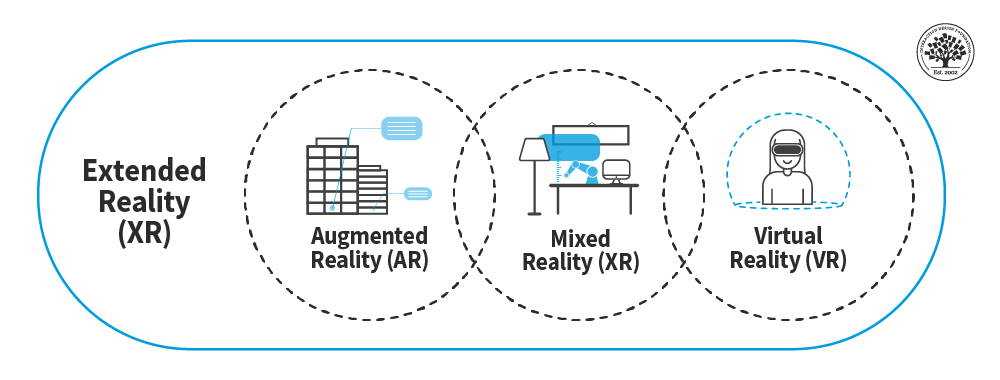Imagine you’re a medical student practising a complex procedure. You’re wearing a headset that allows you to see and interact with a virtual patient, while still being aware of your real surroundings and able to consult physical reference materials. This seamless blend of virtual and real elements is made possible through XR, or Extended Reality.
What is XR?
XR, short for Extended Reality, is an umbrella term that encompasses all immersive technologies. This includes Virtual Reality (VR), Augmented Reality (AR), and Mixed Reality (MR). XR refers to the spectrum of experiences that blur the line between the real world and the simulated world.

Let’s break down these technologies:
- Virtual Reality (VR): VR fully immerses you in a digital environment. When you wear a VR headset, you are cut off from the physical world and placed in a completely virtual one. This is ideal for scenarios where complete focus on a simulated environment is necessary, such as practising an emergency medicine procedure.
- Augmented Reality (AR): AR overlays digital information onto the real world. Think of the popular mobile game Pokémon GO, or apps that let you see how furniture would look in your room. In medical training, AR could be used to project patient information or anatomical overlays onto a real person or manikin.
- Mixed Reality (MR): MR is a more advanced form of AR where virtual objects can interact with the real world. For example, a virtual anatomy model that you can manipulate with your hands and that appears to sit on a real table.
XR encompasses all of these technologies, allowing for a flexible approach to creating immersive experiences.
XR vs Traditional Simulation in Medical Training
Compared to traditional simulation methods like manikins or standardised patients, XR offers several advantages:
- Flexibility: XR can recreate a wide range of scenarios quickly and easily. Unlike physical simulations, which require set-up time and space, XR scenarios can be changed at the push of a button.
- Repeatability: Learners can practice procedures as many times as they need, with consistent conditions each time. This is particularly useful for rare or high-risk scenarios that are difficult to recreate in real life.
- Data Collection: XR systems can track and analyse a learner’s performance in detail, providing insights that might be missed in traditional simulations.
- Cost-Effectiveness: While the initial investment in XR technology might be significant, it can be more cost-effective in the long run compared to maintaining physical simulation labs and equipment.
- Remote Learning: XR enables remote collaborative training, allowing learners and instructors to participate from different locations.
The Future of XR in Healthcare Training
As XR technology continues to advance, we can expect even more realistic and immersive training experiences. Future developments we are integrating include:
- More advanced haptic feedback, allowing learners to feel textures and resistance as they interact with virtual patients or instruments.
- Integration with AI for more realistic patient responses and adaptive learning scenarios.
- Improved graphics and physics simulations for even more lifelike virtual environments.
XR has the potential to revolutionise medical training, providing safe, repeatable, and highly effective learning experiences. By embracing XR technologies, healthcare educators can prepare the next generation of medical professionals with cutting-edge tools that bridge the gap between theory and practice.
To learn more about how we’re using XR in our medical simulations, get in touch or check out the rest of the Simsplainer series.





